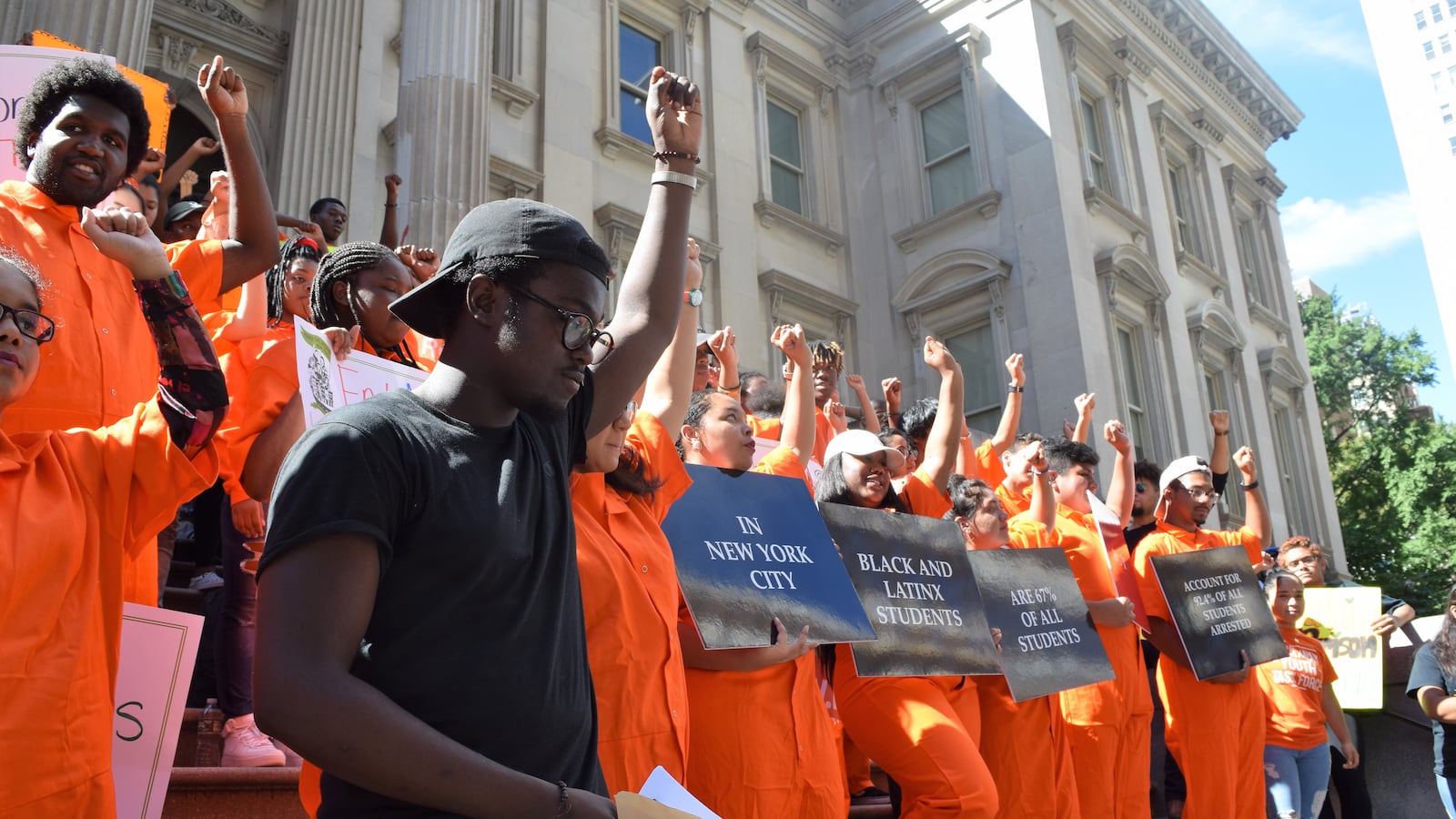More than 92 percent of students arrested in schools last year were black or Hispanic, according to a new analysis — a racial disparity that has persisted even as the city has reduced in-school arrests and summonses.
While just over two-thirds of students are black or Hispanic, they received about 87 percent of criminal summonses issued inside schools, according to an analysis of 2016-2017 school year data by the Urban Youth Collaborative and the Center for Popular Democracy. Just over 1,100 students were arrested and 805 were issued summonses during that period, which spans from July 2016 to June 2017, the analysis of police department data shows.
Black girls were nearly 13 times more likely to be arrested than white girls, while black boys were almost 8 times more likely to be arrested than white boys, according to the groups, which have called for a ban on most school arrests and summonses.
Black and Hispanic students also accounted for 96 percent of students handcuffed during “child-in-crisis” incidents, in which students in emotional distress are removed from their classrooms and taken to a hospital for a mental-health evaluation. The police responded to more than 2,700 such incidents during this period.
Disparities in arrests, and treatment by the police and within the criminal justice system, have been a flashpoint in race relations nationwide, culminating recently in widespread protests within the NFL as football players, and now even team owners, have taken a knee during the singing of the national anthem to highlight the problem. The issue has long been a subject of contention within schools, as has the frequency of involvement by the police in resolving school discipline matters.
An Education Week Research Center analysis earlier this year found that black students are arrested in schools at disproportionately high levels in 43 states and the District of Columbia — possibly because they are more likely than students of any other race or ethnicity to attend schools with on-site police.
Mayor Bill de Blasio has urged schools to adopt less harsh discipline policies and, during his tenure, suspensions have dropped by 30 percent. However, as with arrests and summonses, black students remain disproportionately likely to be suspended.
School safety agents, the unarmed guards embedded in some schools, have continued to arrest or issue summonses to fewer students under de Blasio. But police officers are behind the vast majority of school arrests and summonses, which advocates say is a problem since they are not specially trained in working with students.
In 2016, 60 percent of school arrests were for misdemeanors and 39 percent for felonies; assault and robbery were the most common charges, according to a New York Civil Liberties Union report in May. The majority of summonses stemmed from marijuana possession or disorderly conduct, which covers offenses such as fighting or using profanities.
Advocates want the city to eliminate in-school arrests, summonses, and juvenile reports — which are given to children younger than 16 — for misdemeanors and non-criminal violations. They note that schools already discipline students for those infractions — sometimes with lengthy suspensions — which they say makes it unnecessary to involve the police and courts.
“Clearly there’s an issue with discriminatory policing in schools,” said Kesi Foster, a coordinator with the Urban Youth Collaborative. “It’s also unnecessary policing.”
To push for this change, the collaborative helped stage a rally outside education department headquarters Friday that organizers said drew dozens of students.
The police department press office referred questions to the education department.
Education department officials said they are working to address the racial disparities in harsh punishments. They pointed to several initiatives meant to improve the way schools respond to student misbehavior, including de-escalation training for staff and the hiring of additional guidance counselors.
The agency also helps secure free legal assistance for students who have received summonses, and has included 71 schools in a pilot program where students aged 16 or older receive warning cards instead of criminal summonses for marijuana possession or disorderly conduct.
“Last year was the safest school year on record, crime in schools is at an all-time low, and school-based arrests and summonses are continuing to decline across the city,” department spokeswoman Toya Holness said in a statement.

